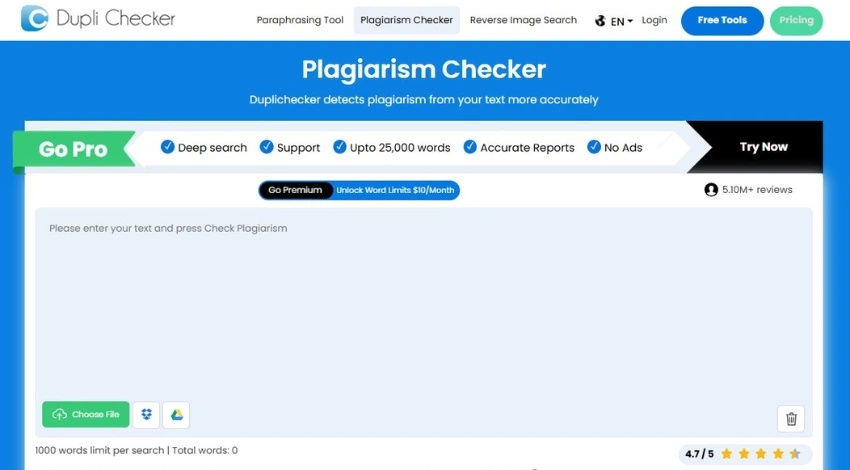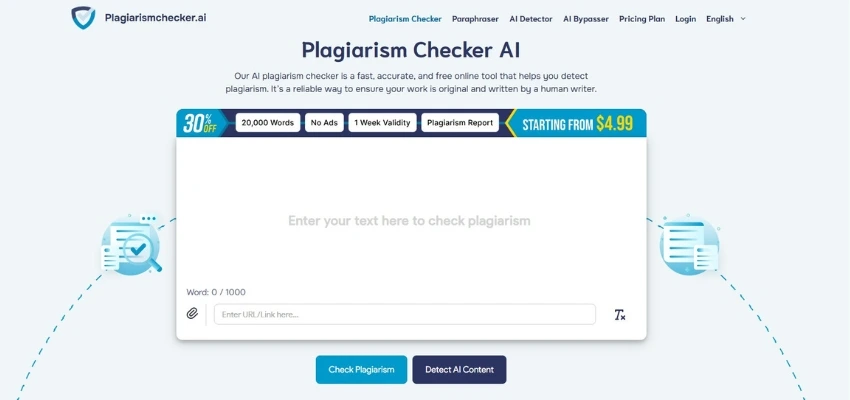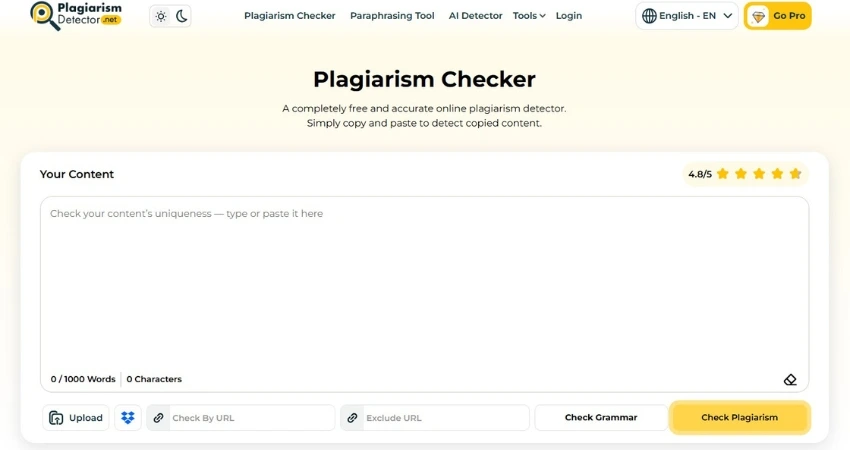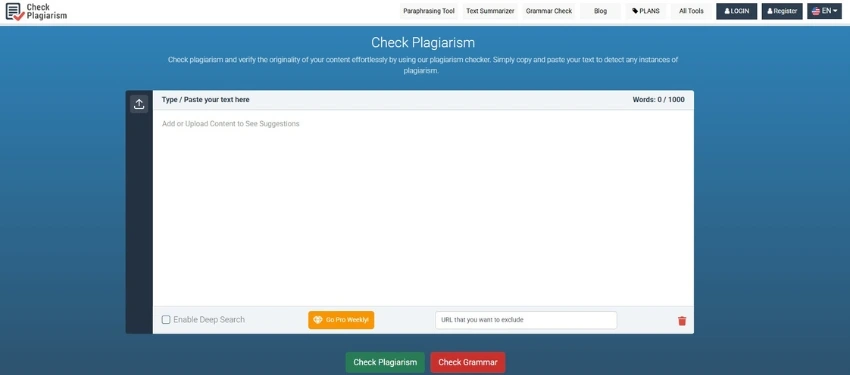How Bloggers Can Detect and Fix Plagiarism Before Publishing

Plagiarism for blogs and websites is more harmful than anything else. In fact, one flagged article is enough to turn loyal readers into sceptics. Similarly, brands pull back, and search engines start pushing your posts to page three.
However, the bigger issue is that you often don’t see it coming. A few lines borrowed too closely from a source, a sentence lifted from notes without thinking, and you’ve got an issue. But the question is, how bloggers can detect and fix plagiarism before publishing?
That’s why the smart move is to catch and fix it before the world sees your work. Here, we will share the best practices to spot and avoid plagiarism in your content.
Let’s start!
Why is Plagiarism an Issue for Bloggers?
For bloggers or want to start a blogging career, plagiarism isn’t a “minor slip.” It’s a credibility killer. It can create multiple issues for your websites, including;
Drags Down Search Rankings
Google isn’t shy about penalizing content that mirrors existing material, even if you didn’t copy on purpose. Once those penalties hit, recovering your organic reach might take months.
Damages Your Reputation
Readers notice when something feels recycled. In a crowded space, you can’t afford to look like a second-hand source. Such a situation leads to broken trust and a sharp decline in the organic traffic, because plagiarism makes it difficult for any blogger to retain trust and their target audience.
Creates Legal Risks
Copyright infringement can trigger takedown notices or worse, lawsuits. And the smaller your blog, the less margin you have for that kind of trouble.
Collaboration Opportunities
Brands and guest post partners generally check your history before collaborating with you. If plagiarism shows up in their search, they’ll quietly move on to someone else.
Often, the cause isn’t outright theft. Instead, it’s lazy research, weak paraphrasing, or over-reliance on a single source. But in the public eye, intent doesn’t soften the impact.
How Bloggers Can Detect Plagiarism?
You can’t rely on memory or “gut feeling” here. If you want to catch plagiarism early, you need a process. A simple routine of scanning your draft before it hits the CMS saves you from headaches later.
By Performing Strategic Searches Online
You can’t rule out the likelihood of plagiarism in your content, no matter how much research you have done to write it. You must implement the approach of critically analyzing your content for uniqueness and identifying potential pitfalls. One way to do so is to perform strategic searches online.
You can simply copy a distinctive phrase or sentence from your draft, surround it with quotation marks, and paste it into a search engine to perform a web search. If somehow you are able to find exact matches, you have probably become a victim of influenced writing. So, investigate the source, cross-reference your writing, and identify duplication to make necessary fixes.
By Using Plagiarism Checkers
Plagiarism checkers compare your text against billions of indexed pages, journal entries, and archived documents. The good ones don’t just give you a percentage; they point out exactly where the match happens so you can decide what to change.
4 Best Plagiarism Checkers To Try
There are a lot of plagiarism checker tools available online. But which one gives the accurate results? These are the questions that need to be answered. So here we are to give you a solution. We listed the top 4 best plagiarism checkers that give you accurate results and help you fix all the errors.
News365 also fix your blogging scripts issues in no time. AI-powered PHP newspaper scripts that can generate content and have 6 + exclusive themes. It changed the blogging experience and helps to generate revenue in your blogging career journey.
1. DupliChecker.com

DupliChecker works for both quick checks and full-length posts. With DupliChecker’s plagiarism checker, you can quickly check duplicate content online. Just paste your draft or upload a file, and within seconds, it shows matching sections along with links to the source.
Most bloggers prefer it because it:
- Handles multiple file formats.
- Shows the match percentage for each segment.
- Lets you check smaller sections separately for accuracy.
Even a low match percentage deserves attention. A single copied sentence from an authoritative source can harm your SEO more than a large section from a low-traffic site.
2. PlagiarismChecker.ai

This tool spots more than copy-paste issues. It also detects paraphrased plagiarism where the words are changed but the structure is identical. That’s a lifesaver when you’ve rewritten something but still stayed too close to the source.
This plagiarism detector stands out because it provides:
- Side-by-side match display.
- Rewrite suggestions for problem areas.
- Integration with writing apps for faster corrections.
If you’ve ever been confident your text was original and then got hit with a claim, paraphrase detection is the feature you wish you’d had.
3. PlagiarismDetector.net

It’s another reliable plagiarism checker that many bloggers rely on. This free-to-use tool is as effective as many of its premium counterparts. With this tool, you can check up to 1,000 words per query without needing to buy a subscription.
It’s a go-to plagiarism detector for various reasons, including:
- Reliable and detailed reports.
- Doesn’t show false positives.
- Built-in grammar checker and paraphrasing tool.
It’s ideal for editorial workflows where multiple authors submit content. One quick scan clears everything before the editing phase.
4. Check-Plagiarism.com

If you are aiming to analyze content beyond mere verbatim duplication, this is the perfect option for you. This blogging tool is equipped with all the necessary functionalities to detect subtle forms of duplication that usually slip past average plagiarism detection tools. Using this tool will help you perform an in-depth analysis to make sure the text is unique and no modifications are required.
Here are some reasons that make this tool perfect for performing plagiarism checks:
- Multilingual support
- Comprehensive report generation
- Real-time plagiarism check
- Up to 99% accuracy
You can rely on this tool to perform accurate plagiarism checks and spot the slightest duplication issues that can raise questions about your credibility and intellectual honesty.
How Bloggers Can Fix Plagiarism?
Catching plagiarism is one thing. Fixing it without gutting your post is another. The goal isn’t just to delete the plagiarized portions. It’s to replace weak or risky parts with material that strengthens your article.
Here are some easy ways to fix plagiarism.
Ensuring a Unique Writing Style
Many times, plagiarism occurs when a writer tries to mimic someone else and uses a borrowed writing style to craft content. A better way to mitigate the likelihood of accidental plagiarism in the creation of content is to inject your unique writing style into it.
You can do this by following a few effective tips:
- Build your own style archive.
- Try to reframe borrowed information rather than rephrasing it.
- Take inspiration from multiple sources and blend takeaways while writing.
- Define the core purpose and let your inner self dictate the voice.
- Anchor ideas into your own perspective.
When you focus on injecting yourself into the content, the likelihood of plagiarism becomes minimal.
Researching the Topic
Weak research is plagiarism’s best friend. If all your facts come from the same handful of articles, your post will echo theirs.
Better approach:
- Pull from primary sources, including interviews, original data, or firsthand observation.
- Mix perspectives from multiple credible outlets.
- Take bullet-point notes in your own words instead of copying full sentences.
When your research is deeper than the competition’s, originality comes naturally.
Properly Citing Sources
Sometimes you need to quote someone directly. Maybe their phrasing is perfect, or their statement holds authority you can’t replicate. In that case, cite it openly.
Key habits for avoiding plagiarism:
- Use quotation marks for exact phrases.
- Attribute data with both name and source link.
- Place citations where they’re easy to spot, don’t hide them in a vague “Sources” list.
Clear attribution not only keeps you safe, it signals to readers that you care about accuracy.
Paraphrasing Effectively
Paraphrasing is where most unintentional plagiarism happens. Changing a few words isn’t enough.
A safer method:
- Read the section once without writing.
- Close the source.
- Re-explain the idea in your own voice, as if you’re telling it to a friend over coffee.
- Use an AI paraphraser to restructure sentences and make content 100% original.
This keeps you from falling into the trap of mirroring sentence structure or pacing.
Adding Unique Insights
If your article is nothing but a summary of what’s already online, it will always risk sounding borrowed.
To avoid plagiarism, add your own insights to the article. For instance, you can:
- Include lessons from your own blogging experience.
- Give niche-specific examples no one else has covered.
- Offer predictions or interpretations based on your expertise.
Readers return to blogs that sound like real people, not rephrased Wikipedia entries.
Changing the Structure
Copying someone else’s flow, even with different wording, can raise plagiarism flags. Therefore, don’t rely on built-in templates and structures. Instead:
- Swap the order of points.
- Merge related ideas into one section or split complex ideas into smaller ones.
- Start with an example instead of a definition.
When you reorganize your posts, you naturally find opportunities to rephrase and reframe.
Removing Unnecessary Quotes
Yes, quotes add authority and are great for blogs. But too many of them turn your blog into a patchwork of other people’s words. You can also use a blogger template to improve the reader experience.
Trim them by:
- Summarizing where possible.
- Keeping only the quotes that truly add weight.
- Following each quote with your own commentary so your voice dominates.
The more of the post that’s yours, the stronger your connection with the reader.
Conclusion
Plagiarism can sink a blog faster than slow traffic ever could. The fix isn’t complicated; it’s about building habits that keep your work clean from the start.
So now you know how bloggers can detect and fix plagiarism, so use reliable checkers, keep your research wide and deep, credit when you borrow, and make sure every post has something only you could write. Do that, and you’ll publish with the kind of confidence that algorithms, readers, and partners respect.










